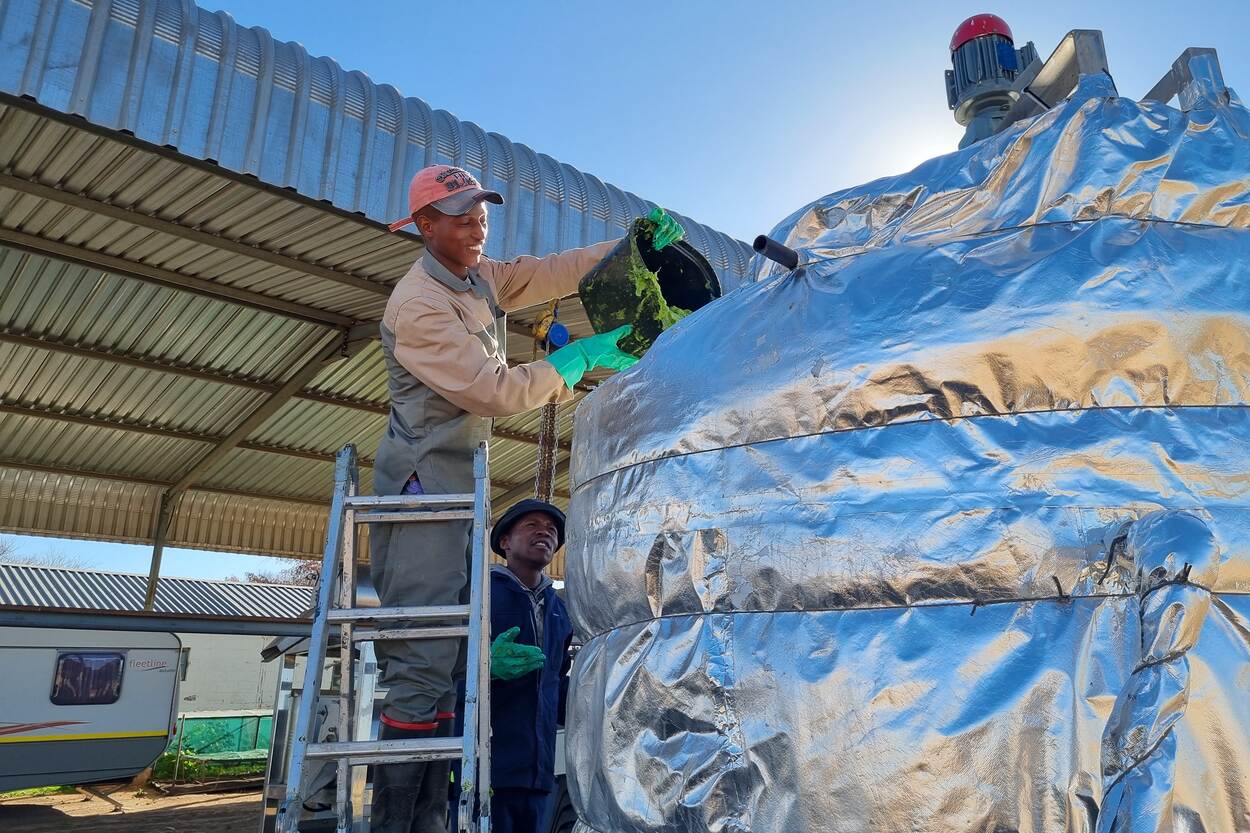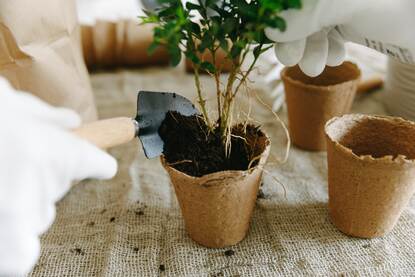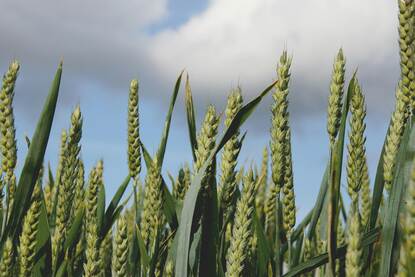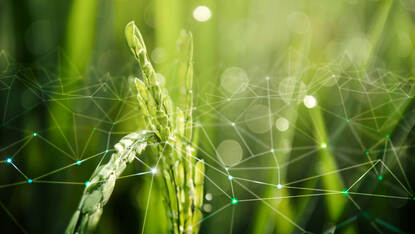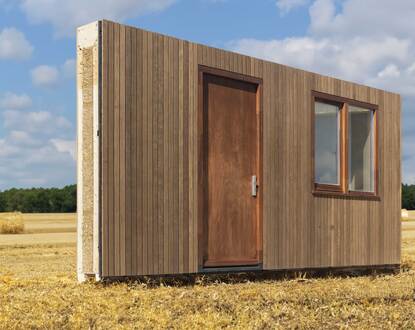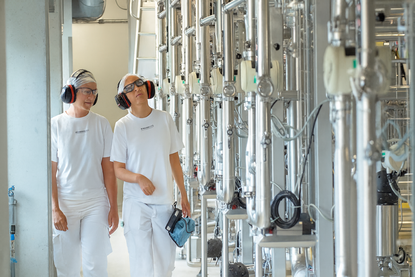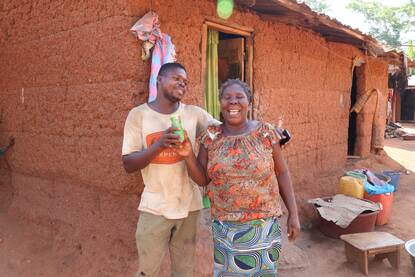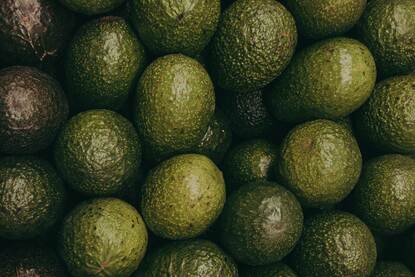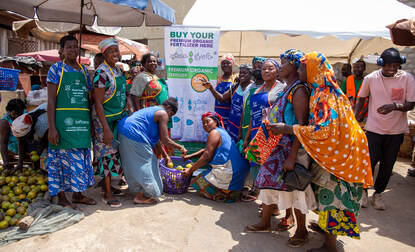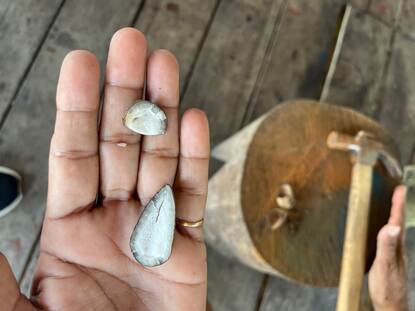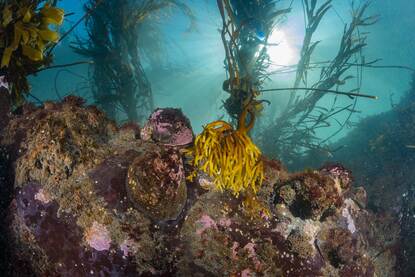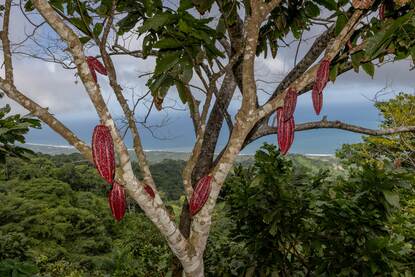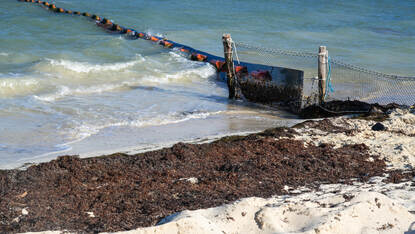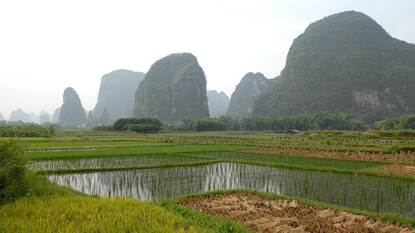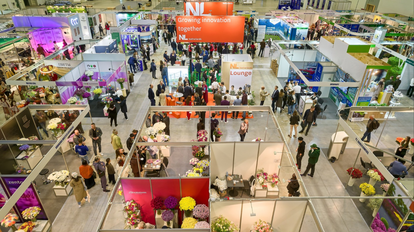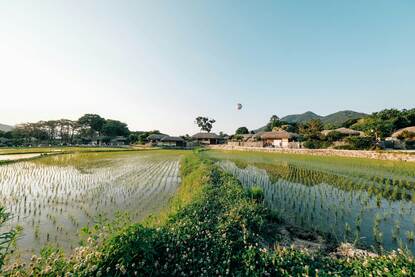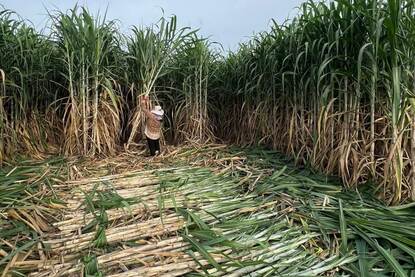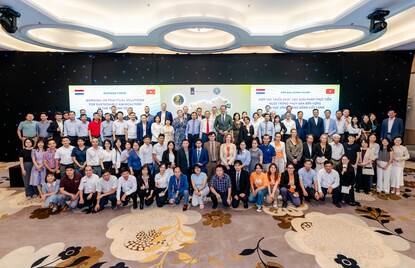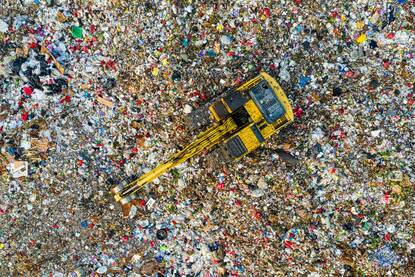Foto Feedstock being added to a biodigester. Source: Opus Cactus
Although still in its early stages, South Africa has been developing the bioeconomy sector for more than a decade. The government sees it as a pathway to create jobs, improve energy security, and tackle environmental challenges. Agriculture is expected to play the biggest role. South Africa offers a unique combination: strong agricultural innovation, affordable land, and a dynamic private sector. These conditions create fertile ground for new ideas and collaboration. The Netherlands Agricultural Network (LAN) team at the Dutch Embassy in Pretoria sees a growing number of companies interested in innovative projects and pilots.
The term 'bioeconomy' gained prominence at the G20 (a group of countries that brings together the world's major advanced and emerging economies) under Brazil’s presidency in 2024, but South Africa has long been working on it. In 2013, the Department of Science and Technology launched the Bioeconomy Strategy, building on the earlier A National Biotechnology Strategy (2001) and the Ten-Year Innovation Plan (2008). Its goal is to ensure that the bioeconomy is a major contributor to the national gross domestic product (GDP) by 2030 and that it will add 5% to the national GDP by 2050.
Agriculture is central to this strategy. It provides the feedstocks for bio-based products and already contributes more than 10% of national gross domestic product (GDP). To support the growth of the bioeconomy, the government created the Agricultural Bioeconomy Innovation Partnership Programme (ABIPP), which funds and facilitates research.
So far, it has secured at least R250 million (€12.2 million) in co-funding from industry with a 7,300% increase in annual co-funding in just five years. One of the supported projects is a grain and oilseed research program carried out in partnership with Grain SA (the organization that represents grain farmers in South Africa), focusing on crop improvement, crop protection, and climate resilience. ABIPP has also invested in the Bioeconomy SA Portal (an online resource about the bioeconomy in South Africa), aquaculture programs, and the agro-processing of native niche crops such as Marula, Honeybush, and Cape Aloe.
In January 2025, South Africa’s Agriculture Minister John Steenhuisen emphasized that agriculture delivers the highest economic impact across the bioeconomy’s value chain. He also announced a review of the National Biodiversity Economy Strategy (NBES), a multi-annual strategy designed to optimize biodiversity-based business potential across terrestrial, freshwater, estuarine, and marine and coastal realms.
Its goals include eco-tourism growth, bioprospecting and biotrade, and biodiversity-based harvesting and production. For example, it seeks to increase the GDP contribution from pharmaceuticals, cosmetics, and food supplements from R2 billion in 2020 to nearly R12 billion by 2036. The Minister noted that new sectors such as forestry, ecotourism, and marine and fisheries will be included in the expanded strategy.
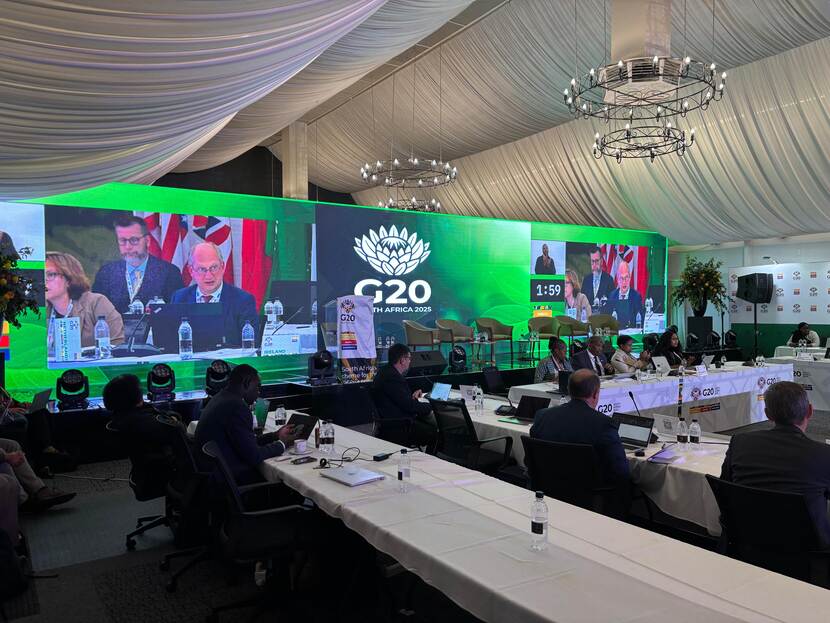
Bilateral partners working toward a global framework
The Department of Science, Technology and Innovation is also coordinating the G20 Initiative on Bioeconomy, which outlines a global effort to advance sustainable, equitable, and climate-resilient growth by using biological resources and biotechnology. A core priority is establishing global standards for bioeconomy development.
Wageningen University and Research (WUR) has played a key role, drafting the paper 'Building a Resilient Bioeconomy'. Presented at the G20 Agriculture Chief Scientists' meeting in Limpopo in May 2025, it compared national definitions of bioeconomy and proposed a common framework. The main recommendation was to develop a set of indicators to monitor and measure bioeconomy development, helping policymakers to understand results, reveal trade-offs, and set clear targets.
Food security is a recurring concern, as expanding bio-based crop production could compete with food crops. WUR’s advice, requested by the South African Department of Agriculture, focused on:
-
Enhancing food security by improving productivity in existing agriculture
-
Promoting agroforestry to reduce deforestation impacts
-
Fostering regional trade and reducing dependency on imports
-
Encouraging more crop diversity to fight malnutrition
WUR also assisted South Africa in the G20 negotiations by providing expertise and facilitating cooperation between stakeholders.
The Netherlands and South Africa both recognize that the bioeconomy can drive jobs, investment, and lower environmental footprints. Their cooperation at the G20 reflects an already strong bilateral relationship. South African agricultural exports to the Netherlands reached R21 billion in 2022. The Netherlands remains South Africa’s largest export market for fruit and vegetables and is a top foreign investor, accounting for 17.7% of total foreign direct investment (FDI). The Joint Commission for Cooperation (May 2025) reported total FDI between the two countries at R364.1 billion by the end of 2023.
‘The Netherlands and South Africa both recognize that the bioeconomy can drive jobs, investment, and lower environmental footprints’
Examples of innovation in practice
South Africa’s bioeconomy is no longer theoretical; it is alive in concrete projects, such as:
-
A major South African mining and energy company, inspired by the Just Energy Transition, explored collaboration with the LAN team to transform abandoned mine lands into farmland for biofuel crops. This approach restores soil health while supplying feedstocks for bioenergy. With mining being such a dominant sector, this model could be replicated widely and contribute to biodiversity conservation by reusing degraded land. As of now, the project is still under discussion.
-
The Coega Biomass Centre (CBC), established through Dutch–South African cooperation, produces biomass pellets from invasive alien vegetation near Gqeberha, a major port city in the Eastern Cape province. These pellets replace coal in industrial furnaces and cooking devices. The project benefits from sustainability assessments carried out by knowledge institutes, proving its viability and impact. The factory has been operating since 2022, creating more than 600 jobs and training local communities to clear invasive alien vegetation that damaged indigenous landscapes.
-
Opus Cactus is a startup pioneering cactus-based biogas and operates in South Africa’s semi-arid regions and maintains close contact with the Dutch Embassy. With 250 hectares under cultivation, it is developing a highly water-efficient model that uses as little as 400 ml of water per hectare annually. In a water-scarce country, this is a breakthrough. The company is also exploring the use of cacti in animal feeds but has aspirations of growing the plant for high-value applications such as nutraceuticals, cosmetics, and biomaterials. The affordability of land and growing energy demand were decisive factors in choosing South Africa as a base. Currently, Opus Cactus is at the pilot stage.
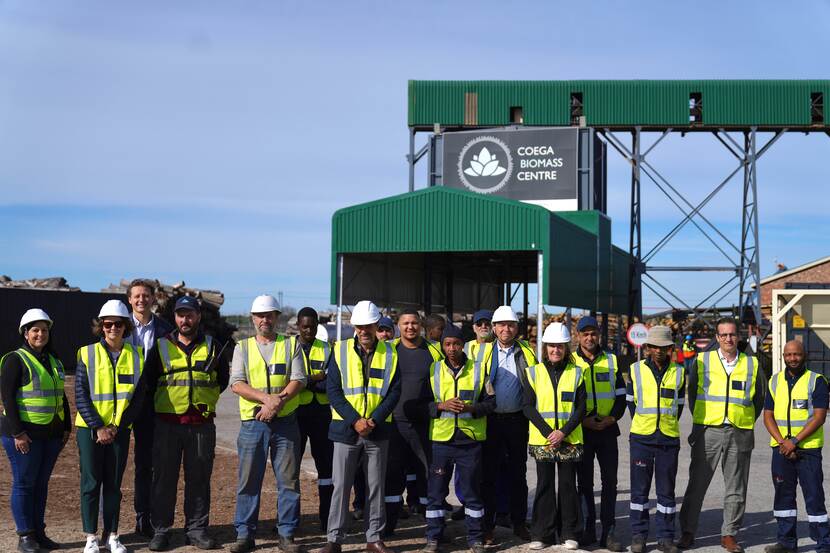
Future opportunities for Dutch stakeholders
The foundation for deeper collaboration is strong. Companies are investing, governments are engaged, and institutes such as Stellenbosch University, the University of the Free State, Wageningen University & Research, Aeres, and Utrecht University share a long history of joint research. These partnerships provide the basis for world-class innovation and practical, scalable bio-based solutions.
The University of the Free State and Aeres, for instance, host a virtual exchange where students design business plans for real farms in both countries, aiming to improve their efficiency. Stellenbosch University has also contributed significantly through the Stellenbosch Horti Demo Centre providing a platform for teaching and training in innovative cropping systems to support food security.
As multilateral, bilateral, and domestic policies develop, the bioeconomy is expected to gain momentum. This will open new opportunities for investment, applied research, and co-developed projects that meet global standards while responding to local needs. Although still in its early stages, the most immediate opportunities appear to be in cultivation and growth, while processing is less advanced and may offer a gap in the market.
South Africa’s bioeconomy is young but ambitious, aiming to contribute significantly to national GDP by 2050. The government, private sector, and international partners are aligning to make this happen. The LAN team in Pretoria is eager to support and make the most of the bio-opportunities available in this innovative sector.
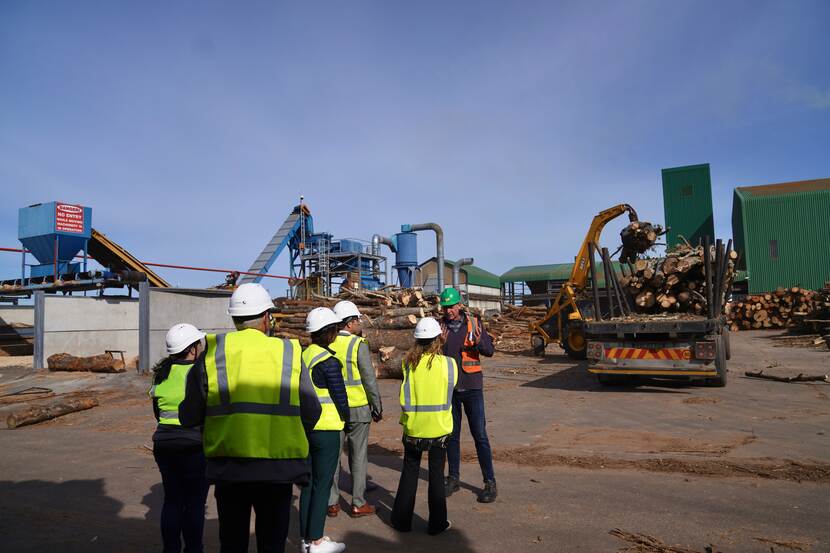
More information
Would you like to know more about the opportunities in South Africa's bioeconomy? You can visit the country page of South Africa at the website Agroberichtenbuitenland.nl of the Dutch Ministry of Agriculture, Fisheries, Food Security and Nature. You can also send an email to the LAN team at the Dutch Embassy in Pretoria: pre-lvvn@minbuza.nl.
